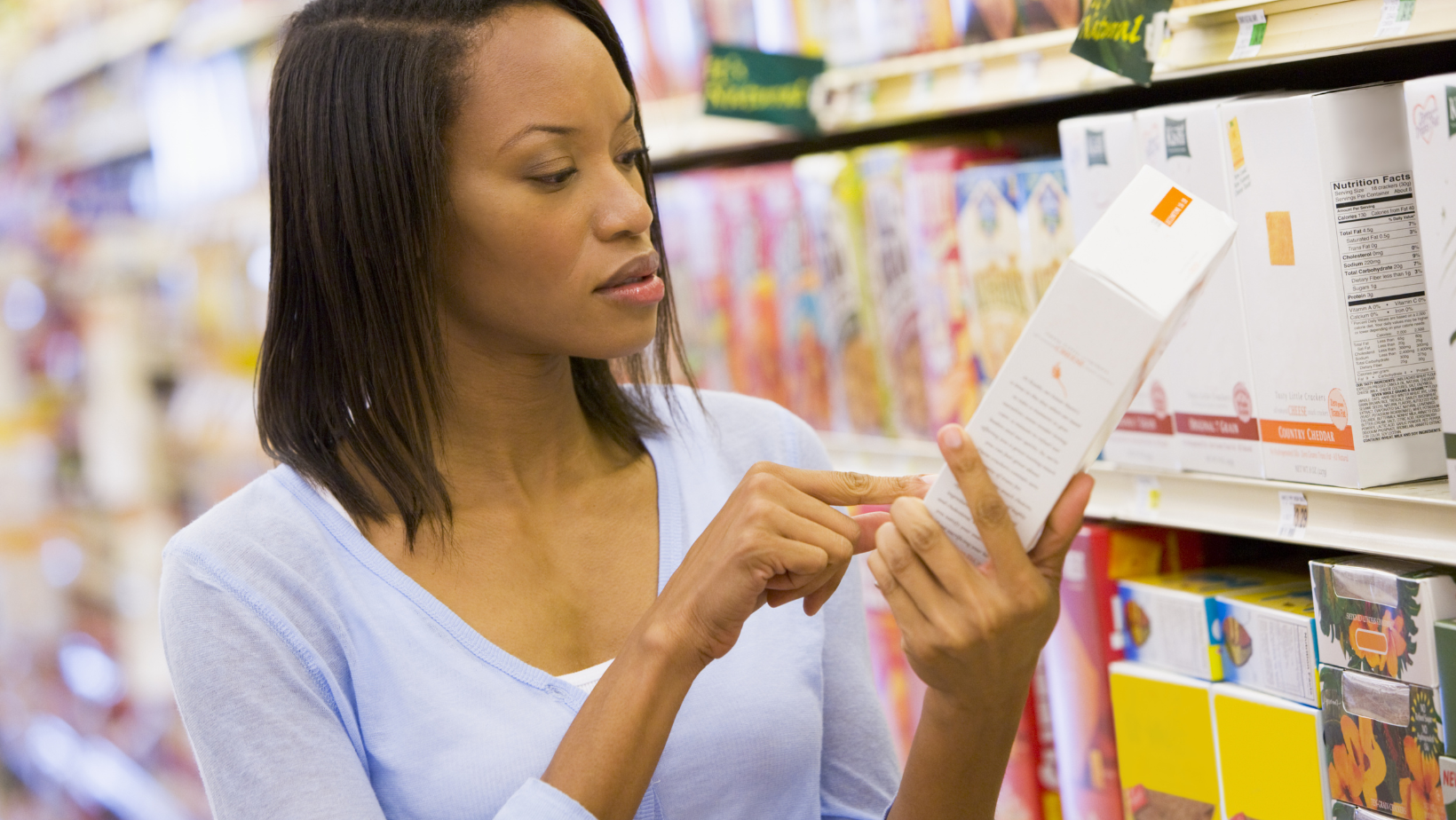
28 Mar How To Read Food Labels: A Guide
Food labels can cause a lot of confusion during a supermarket shop. Often, food companies use language that leads us to believe a food is healthy when in truth, it’s anything but. Knowing how to read food labels is important in order to ensure you’re making informed choices.
HOW DO YOU READ FOOD LABELS?
Here are our top tips for understanding what’s on your food labels, from getting to grips with serving sizes and ingredients to avoid.
BEWARE OF ‘A SERVING’.
Food manufacturers frequently give nutritional information per serving. However, often their idea of a serving size is far smaller than the serving size we would typically eat! This can trick us into thinking we are eating less calories than we actually are. Labels will also state calorie and nutritional values per 100g so focus on this instead. Learn what 100g looks like – this will give you a much clearer idea of how much you’re likely to be consuming.
UNDERSTAND THE INGREDIENTS
Ingredients are listed in order of quantity meaning those higher up on the list are present in the greatest amounts. Beware of foods with unhealthy ingredients higher up the list. As a general rule the fewer the ingredients a food has, the less processed it’s likely to be. Aim to avoid regularly eating foods with long lists of ingredients.
Read more: Ultra Processed Foods: What They Are And How To Avoid Them
AVOID INGREDIENTS YOU DON’T KNOW
Food manufacturers use a wide variety of undesirable ingredients in our foods. Ingredients used to enhance the look, taste and shelf life of foods may not always be good for our health. It’s a good idea to avoid buying foods with ingredients you don’t recognise. If in doubt, Google them.
NUTRITION INFORMATION
The nutrition information is the table of information normally found on the reverse of food packaging. It outlines the calorie, carbohydrate, sugar, fat, protein, fibre and salt content of foods. Reading this will help you to better understand what your food is made up of. Focus on foods that are higher in fibre and lower in salt and sugar. The NHS states that anything over 22.5g of sugars per 100g is a high sugar food (we would consider this very high). Anything under 5g per 100g is considered low sugar.
Read more: How Much Sugar Is In Your Food?
FOCUS ON THE DETAIL
Often the front of food packaging will use language to make a food sound more healthy than it is. Take for example the term ‘no added sugar’. This doesn’t mean that a food or drink is low in sugar! In fact, it may be quite the opposite. In the case of fruit juice high amounts fruit sugars are naturally present so it’s unnecessary to add in more. Focus less on the words on the front of the packaging and more on the detail in the nutrition information and ingredients list.
GAIN CLARITY AROUND YOUR NUTRITION
We are a team of qualified nutritionists who specialise in weight loss. We understand the confusion that can arise when trying to stick to a healthy, balanced diet. Our job is to support you in gaining clarity on what works best for your body. We can support you in overcoming your weight challenges, achieving your ideal weight and maintaining it long term. To find out more about how we can help you, use this link to book in for a complimentary call today.
Read next: Can Your DNA Unlock The Secret To Your Weight Loss Success?

